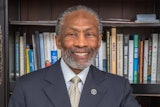 Rebecca Dolinsky
Rebecca DolinskyHow can the higher education community better understand the influence of campus climate and educational practice on LGBTQ student success?
We focused on this very question in late March at the Association of American Colleges and Universities’ (AAC&U) Diversity, Learning, and Student Success conference in Chicago. The aim in our session was to connect anecdotes about LGBTQ student experiences with the literature on student success, and we used theories on identity and inequality to help augment our presentation. We saw this conference as an opportunity to collaborate on the issue of LGBTQ student success through our different backgrounds and expertise.
Through this collaborative work, we are seeking to broaden the notion of what it means to be underserved in U.S. higher education. Students experience higher education through multiple, intersecting identities, including their sexual identities and gender expressions. Yet, too many LGBTQ students feel unsafe, unwelcome, or disconnected from social and/or academic life on their respective campuses.
For example, as Diverse reported in June of last year, a student was expelled from Grace University, a private, Christian college in Omaha, for engaging in a same-sex relationship while finishing her degree and while working at a civil rights organization in another state. Since the institution is private, the administration can expel students who do not meet the code of conduct.
In September of last year, another student at Edgecombe Community College in Rocky Mount, N.C., was featured in the local news, describing the constant bullying, harassment, and death threats that she faces as an openly transgender student on her campus. She considered dropping out, but she opted to first push for stricter anti-bullying policies at her institution.
Both of these examples underscore the importance of social and academic support for our nation’s LGBTQ students. As participants at our session pointed out last month, LGBTQ students are often provided either social or academic support on their campuses—but generally not both.
Instances such as the above are often “explained away” (Frankenburg, 1993) by the rhetoric of free speech or freedom of expression, even where we can identify threat or harm to students and other campus community members. These examples, which surely affected campus climate, should instead be positioned inside the discourse of civility and civic engagement.
We can then think about counterexamples of campus community members interacting positively across differences. As the two headlines demonstrate above, we tend to highlight the negative or problematic examples, which do help promote dialogue about social change. Yet, we also need to offer positive examples that underscore the spirit of a liberally educated citizenry.
Michael Sam’s recent coming out story provides a nice counterexample to the two anecdotes above. In the face of a small group of homophobic, vitriolic protesters who positioned themselves outside the University of Missouri during a campus event supporting Sam and his fellow football players, hundreds of Mizzou students formed a human wall on the campus to shroud the protestors.
Following these campus climate examples, we asked our participants to interpret some foundational literature on student success in light of some common LGBTQ student experiences. We acknowledged that, for many faculty and staff who are more familiar with best practices for supporting first-generation, racial or ethnic minority or low-income students, the notion of connecting sexuality or gender identity to student success is still underexplored.
Scholars in the field of student development, success, and retention have told us a great deal about the connection between student success and particular conditions, such as:
- Social integration and a sense of belonging (Tinto, 1987)
- Affirming interpersonal interactions (Habley, 2004; Wyckoff, 1998)
- Validation from staff and faculty of their identity as creators of knowledge and as members of the campus community (Rendon, 1994)
- Opportunities for active involvement and investment on campus
These conditions are dependent on how students, based on their own intersectional identities, are experiencing classroom interactions, curricular content, campus climate, and social or community activities. Educators in and out of the classroom should consider how events, groups, scholarship, and learning activities dynamically address the different facets of a student’s identity. Such critical inquiry can help us to create opportunities for students to engage academically and socially and experience validation not only in terms of their culture or sexuality or gender or spirituality but as authentic, whole people.
Given this information, our question to workshop participants was: How can campus practices intentionally create academic and social engagement that addresses specific concerns of the intersectional LGBTQ student experience? What are the assumptions or tensions we need to mitigate?
To answer this, we have to first work through heteronormativity that assumes sexuality as a non-issue to educational outcomes. We have to acknowledge that LGBTQ students’ identities and experiences are either included or excluded by the curriculum, co-curriculum, faculty, and peers. What happens in and out of the classroom on campus defines the opportunities for LGBTQ students’ engagement and, thus, their opportunities to succeed and persist in college.
In our final session activity, we coupled the basic tenets of student success and inclusive campus practice referenced above with a set of four descriptive, experiential statements and asked our participants to describe types of practices or policies that would create academic and social engagement for LGBTQ students in the campus environment. We will share the generative results of this conversation and points reflected in the literature in our follow-up article for Diverse: Issues in Higher Education.
Rebecca Dolinsky is Program Manager and Research Analyst, and Heather McCambly is Program Associate, Office of Diversity, Equity, and Student Success at the Association of American Colleges and Universities.
















